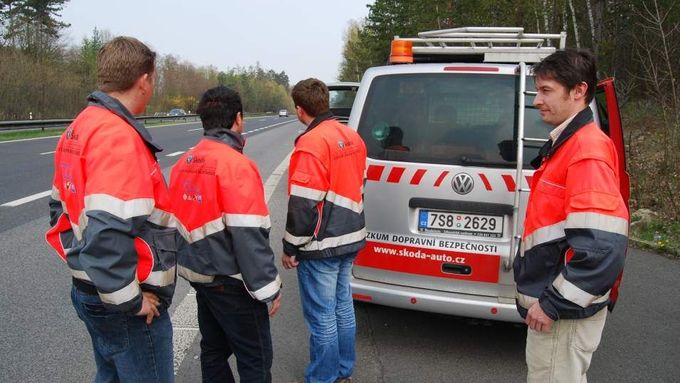Mladá Boleslav - Since two years ago, Czech car manufacturer Škoda Auto operates a special team that visits crash-sites with Škoda cars involved, in order to gather information that can supplement traditional crash-tests.
The team cooperates with Czech police, so sometimes rescue workers and the Škoda team arrive at the same moment. Usually, the team inspects the crashes that take place near Mladá Boleslav, where the company's headquarters is located. Sometimes they first assist to the rescue workers and police, and then they start doing their own investigation.
They focus mostly on three types of crashes. "We are interested in crashes in which airbags were activated, passengers were hurt, or pedestrians were hit," said Robert Šťastný, a member of the team. They inspect above all the Škoda cars that are currently produced by the car-maker.
Škoda Auto uses the information the team gathers to develop new security components. „It is important for us to be directly at the crash-site and gather as much information as possible, as shortly after the crash as possible," explains Petr Krásný, other member of the team.
Read more: Car traffic in Prague to slow down
Cooperation for improved traffic safety
For many years, Audi and Volkswagen have been operating similar teams, which cooperate closely and exchange information with Škoda. „If a Škoda car crashes in Germany and the crash is interesting for us, they document it for us, and we would do the same for them," says Šťastný.
This means that the Škoda team is authorized to investigate crashes that involve Seat, Lamborghini, Bentley or Porsche cars, as they all fall under the Volkswagen group.
Krásný said that 34 percent of the crashes they investigate are frontal crashes, 26 percent are side impact crashes. The latter type is usually the one that has the most devastating effects on the passangers. In a frontal crash, most of the energy is absorbed by the front end, while in a side impact crash, the deformation zone is much more tiny (15 centimeter).
Read more: New driving law boosts sales of winter tyres
More education needed
In addition, the team is responsible for providing the public with information about what to do in case of a car-crash. Štastný said that the Czech Republic is way behind the states such as Germany or Scandinavia in terms of educating drivers and passangers. „Many people get hurt or even die because they fastened their seat belt in a wrong way, or they failed to do it at all, they are seated in a wrong way, etc.," says Šťastný.
Often, the team-members come across some surprising things. For example, they have seen a crash where a roof-door of a crashed car was hauled towards the front window of the other car, only to be blocked by the airbag. „Even though they are not constructed for that, the airbags worked as a shield from the dangerous objects coming from the outside," said Petr Krásný.








